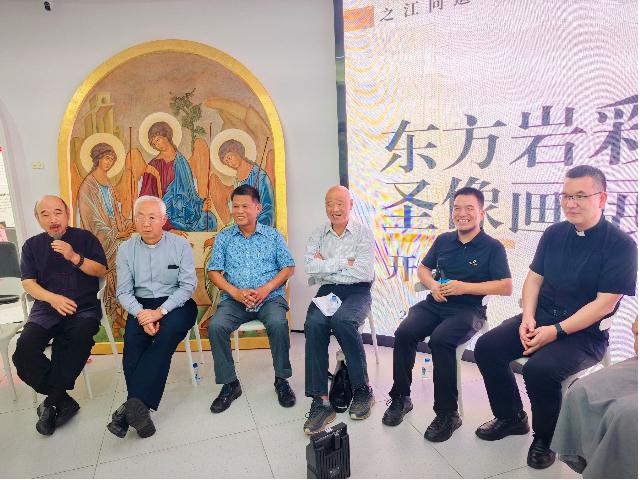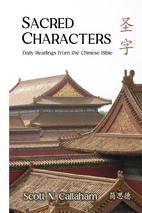On September 29, the Eastern Mineral-Pigment Iconography Exhibition commenced in Ningbo, Zhejiang Province.
Running until November 28, the exhibition features the extraordinary works of Chinese Catholic artist Wang Huaiai. Born in 1978 into a traditional Catholic family in Wenzhou, Zhejiang Province, Wang specializes in Eastern mineral-pigment iconography, crafting icons for churches worldwide. His piece, "The Resurrection of Jesus," earned first prize at the China Catholic Calligraphy and Art Exhibition in 2016, and his mineral-pigment painting, "Our Lady of Guadalupe," is permanently displayed in the Pope's office.
At the opening ceremony, Fr. Zhao Jianmin, vicar general of the Archdiocese of Beijing, delivered a speech. He stated, "The East is where the sun, the natural light, rises. Yet, without the illumination of the soul, we cannot fully appreciate the beauty of the rising sun. Mineral-pigment painting employs natural minerals as materials, but it transcends mere accumulation; it embodies the beauty of the Creator. When Wang Huaiai integrates various elements of Eastern mineral-pigment painting on canvas, a creative miracle unfolds."
Professor Zhang Xiaolu from Xiamen University's College of Art, who served as Wang's advisor during his studies, remarked, "Mineral-pigment painting, a significant medium in traditional Eastern art, embodies a rich cultural heritage and profound aesthetic depth. Historically, as early as the Zhenguan period of the Tang Dynasty, when Nestorianism began to spread eastward, mineral-pigment painting was employed as a form of iconography."
Wang further elaborated on the creative process behind his paintings, stating, "All religions oppose finiteness, fearing that it may lead individuals to lose their sense of self. The Buddha, in the Diamond Sutra, articulates this by stating, 'Everything with form is unreal. If all forms are seen as unreal, the Tathagata will be perceived. Those who see me by outward appearance, or seek me through sound, are on a mistaken path. They cannot perceive the Tathagata.' Similarly, Laozi's Tao Te Ching warns, 'Too much color blinds the eye, too much music deafens the ear, too much taste dulls the palate, too much play maddens the mind, too much desire tears the heart. Therefore, the sage serves the belly, not the eyes. Thus, he rejects the one and accepts the other.'"
He advocated, "Individuals who undergo true spiritual training can cultivate their well-being through the essence of things rather than becoming enslaved by them. In contemporary society, we often find ourselves entrapped by material possessions, particularly electronic devices and cell phones, as well as the pursuit of fame and fortune, leading to a loss of our own identity. This phenomenon can be described as self-enslavement to materiality, which is why many religious traditions express caution regarding the use of material objects, fearing that they may lead to a loss of identity."
Wang elaborated, "In the Old Testament, God sternly commanded, 'Do not make idols of anything in the sky or on earth.' Yet, we see that He later instructed Moses to construct the Ark of the Covenant, the cherubim, and the bronze serpent, which served as a means for the people to look up and find healing."
"Initially prohibited, these creations were later permitted under stringent guidelines and specific conditions. Thus, the essence lies not in the object itself, but in the perception of the individual. What drives your motivation and purpose in such endeavors? What is your original intention? These questions are paramount. A Western iconographer once remarked, 'I paint icons to show the world how I pray and my spiritual engagements.'"
Wang Huaiai, a graduate of Hangzhou Arts and Crafts School and the Department of Fine Arts at Xiamen University, currently resides in Shanghai. He specializes in Eastern mineral-pigment iconography and creates works for churches globally. In 2015, he led a team to create the monumental altar mural titled "Mother of God" for the Mother of God Church in Changzhou. By 2017, he was appointed as a guest calligrapher by the Department of Religious Art at the Theological and Philosophical Seminary of Jilin Province. His mineral-pigment painting, "The Holy Face of Jesus," is part of the Pontifical Council for Culture's Art Gallery collection, and an album featuring over 20 of his major works is housed in the Vatican Apostolic Archive. Another of Wang's mineral-pigment iconographies, "Mother of God," is part of the Little Sisters of Jesus' collection at its Rome headquarters located at Tre Fontane, while many of his other works are held in the collections of churches across Europe, Southeast Asia, and China, as well as by private collectors.
Originally published by the Christian Times
- Edited by Karen Luo, translated by Joyce Leung












